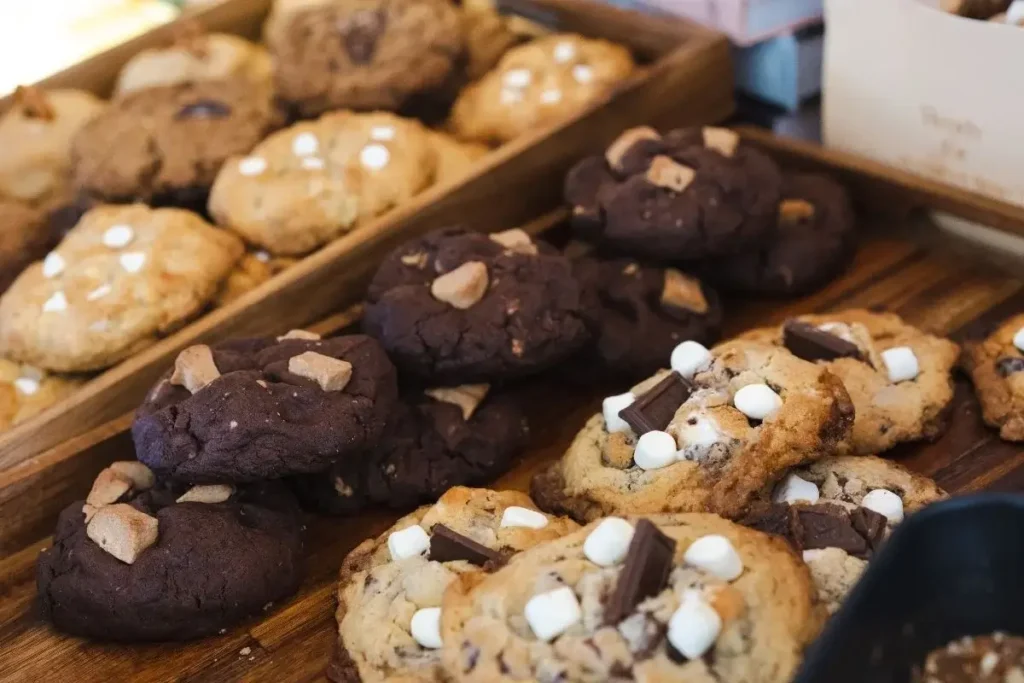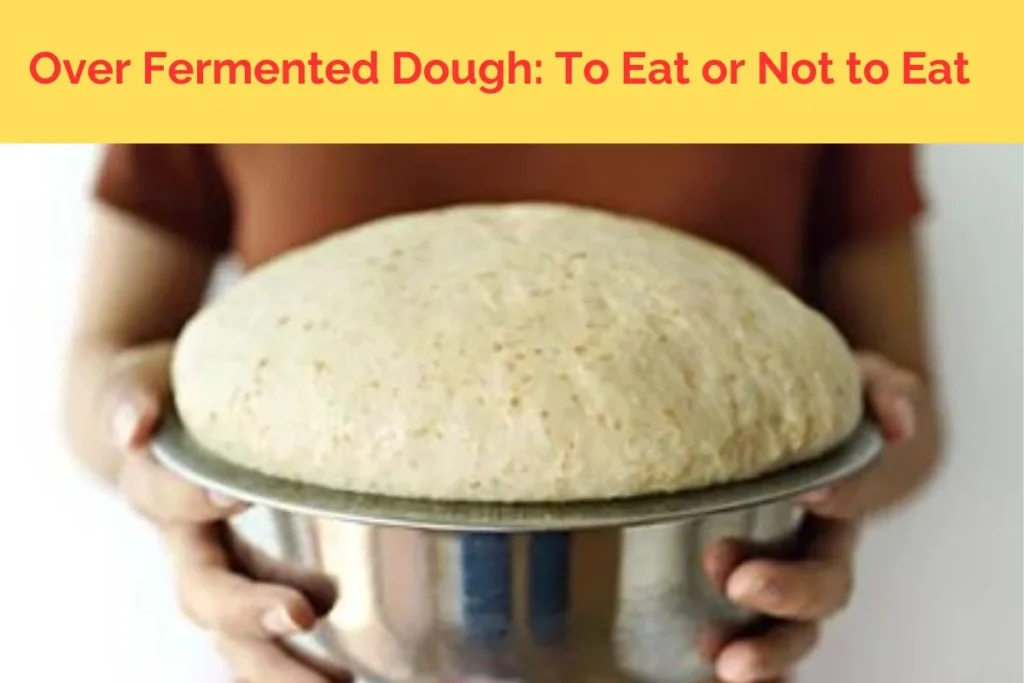
Craving freshly baked cookies but realizing you’re all out of baking powder? Don’t worry – you can still satisfy that sweet tooth! With a bit of creativity and some alternative ingredients, you can whip up delicious cookies without using baking powder.
In this article, we’ll check out different substitutes for baking powder and see how they can transform your cookie recipes. Whether it’s using baking soda and cream of tartar or trying natural alternatives like yogurt, there’s a solution for every pantry.
You’ll not only learn how to make fluffy, tender cookies without baking powder but also discover the unique flavors and textures these ingredients bring to your favorite treats.
So, get ready to dive into the world of alternative baking and uncover the secrets to baking mouthwatering cookies without relying on baking powder.
Table of Contents
ToggleIs it Okay to Bake Cookies without Baking Powder?
Yes, you can make cookies without baking powder, but they might end up with a different texture. Baking powder makes cookies rise, giving them a lighter, softer feel. Without it, your cookies might be a bit denser and not as fluffy. Some recipes use other stuff like baking soda or cream of tartar instead.
Trying these alternatives can work out, but you might need to tweak the amounts of ingredients. In the end, it all comes down to what you like and the kind of cookies you want.
Common Challenges in Baking Cookies Without Baking Powder
Baking cookies without using baking powder comes with its own set of challenges. It requires careful consideration and adjustments to make sure your cookies turn out delicious.
Here are some common issues you might face when making cookies without baking powder:
- No Leavening Agent: Baking powder is crucial in cookie recipes because it helps the cookies rise and gives them a nice texture. Without it, getting that desired lightness becomes tough. Your cookies might end up denser and flatter, which might not be as enjoyable.
- Texture Changes: Baking powder adds a certain fluffiness to cookies, creating a balance between chewy and crispy. Leaving it out can lead to variations in texture. Some people might find the cookies too dense or crumbly, affecting how much they enjoy the treat. Striking the right balance is important for flavorful and satisfying cookies.
- Flavor Adjustments: Baking powder can influence the flavor of cookies. Without it, you might need to adjust other ingredients to maintain the intended taste. Making sure the flavor remains delightful without the leavening agent requires a good understanding of how ingredients interact.
- Spread and Shape Issues: Baking powder affects how cookies spread and their final shape during baking. Without it, cookies may not spread enough or might spread too thin, impacting their appearance. Figuring out the perfect balance between spread and thickness becomes a challenge for those trying baking powder-free cookies.
- Browning Problems: Baking powder helps achieve that golden-brown color on the surface of cookies. Without it, cookies may look paler, affecting their visual appeal. Finding alternative methods to enhance browning becomes important to make cookies that are not only tasty but also visually appealing.

4 Alternative Ingredients for Replacing Baking Powder in Cookies
Baking powder is a staple in many cookie recipes, contributing to their light and fluffy texture. However, if you find yourself without this essential ingredient, fear not! Several alternative ingredients can serve as effective substitutes, allowing you to still create delicious cookies.
Let’s explore four such alternatives and how they can be seamlessly incorporated into your baking adventures.
1. Using Baking Soda as a Substitute for Baking Powder
Baking soda is a versatile ingredient that can step in for baking powder in a pinch. While both are leavening agents, it’s crucial to understand the key differences. Baking powder contains both an acid (cream of tartar) and a base (baking soda), whereas baking soda is purely a base.
To substitute baking soda for baking powder, you’ll need to pair it with an acidic ingredient like yogurt, buttermilk, or vinegar.
For every teaspoon of baking powder required in your cookie recipe, use a quarter teaspoon of baking soda and an additional half teaspoon of your chosen acidic ingredient. This balance ensures the proper chemical reaction, resulting in cookies that maintain their desired rise and texture.
2. Using Cream of Tartar as a Substitute for Baking Powder
Cream of tartar, an acidic byproduct of winemaking, can be a reliable substitute for baking powder. When mixed with baking soda, cream of tartar creates a chemical reaction that mimics the leavening effect of baking powder.
To replace baking powder with cream of tartar, use a quarter teaspoon of baking soda and a half teaspoon of cream of tartar for every teaspoon of baking powder in your recipe. This combination ensures a balanced acidity, promoting the desired rise in your cookies.
3. Using Buttermilk as a Substitute for Baking Powder
Buttermilk is a flavorful and acidic liquid that can serve as an excellent substitute for baking powder. Its tangy taste adds depth to your cookies while providing the necessary acidity for leavening.
For every cup of buttermilk needed, mix one and a half teaspoons of baking soda into your dry ingredients. This substitution not only imparts a subtle tanginess to your cookies but also ensures they maintain their desired light and airy texture.
4. Using Yogurt as a Substitute for Baking Powder:
Yogurt, with its creamy consistency and mild acidity, can act as a suitable alternative to baking powder. Similar to buttermilk, yogurt introduces a delightful flavor profile while contributing to the leavening process.
To replace baking powder with yogurt, incorporate a quarter teaspoon of baking soda and a half cup of yogurt for every teaspoon of baking powder in your recipe. This combination not only preserves the moisture in your cookies but also enhances their overall taste and texture.
Other Alternatives For Baking Powder in Cookies
Here are a few more ingenious substitutes that can elevate your cookies without compromising on taste and texture.
- 1. Self-Rising Flour: Self-rising flour contains baking powder and salt, making it a convenient all-in-one alternative. When using self-rising flour in your cookie recipe, remember to adjust the quantity of additional leavening agents accordingly to avoid over-leavening.
- 2. Vinegar and Baking Soda: A classic duo in the world of kitchen chemistry, vinegar, and baking soda create a lively reaction that can mimic the leavening effect of baking powder. Use one teaspoon of baking soda and one tablespoon of vinegar for every teaspoon of baking powder needed in your recipe.
- 3. Whipped Egg Whites: For a light and airy texture, consider whipping egg whites until stiff peaks form. Gently fold the whipped egg whites into your cookie batter to introduce a natural leavening agent that enhances fluffiness.
- 4. Molasses: Molasses not only add a rich flavor but also contribute acidity to your cookie dough. Utilize one teaspoon of molasses as a substitute for baking powder in recipes where a hint of sweetness complements the overall flavor profile.

Tips for Successful Cookie Baking without Baking Powder
Baking cookies without the trusty companion of baking powder might sound a bit challenging, but don’t worry! With a few tips and tricks, you can still make delicious cookies.
As someone who loves trying new things in the kitchen, I’ve explored the world of baking powder-free cookies and found some helpful insights to share with you.
- Use Baking Soda Smartly: When you need an alternative to baking powder, turn to baking soda. To substitute, follow a 1:3 ratio. For every teaspoon of baking powder in your recipe, use a quarter teaspoon of baking soda and an additional half teaspoon of an acidic ingredient like yogurt, buttermilk, or vinegar. This careful balance ensures the right chemical reaction for a perfect rise in your cookies.
- Try Cream of Tartar: Cream of tartar isn’t just a mysterious spice cabinet item – it’s a great baking powder substitute. Combine it with baking soda in a 1:2 ratio, using a quarter teaspoon of baking soda and half a teaspoon of cream of tartar for every teaspoon of baking powder. This combination creates the ideal leavening effect, giving your cookies the texture and lift they need.
- Experiment with Buttermilk: If you enjoy a subtle tang in your cookies, buttermilk is your secret weapon. Replace baking powder with buttermilk by adding one and a half teaspoons of baking soda to your dry ingredients for every cup of buttermilk. The result? Cookies with a delightful balance of flavors and a light, airy texture.
- Yogurt’s Creamy Twist: For a creamy and slightly tangy variation, use yogurt as a baking powder alternative. Mix a quarter teaspoon of baking soda with half a cup of yogurt for each teaspoon of baking powder in your recipe. This not only keeps your cookies moist but also adds a pleasing flavor complexity.
- Adjust Liquid and Dry Ingredients: Baking powder affects both the rise and the balance of wet and dry ingredients. Without it, adjust the ratio of liquids to dry components. Gradually modify the amounts to achieve the desired consistency in your cookie dough.
- Pay Attention to Texture: Cookies without baking powder may behave differently in the oven. Keep a close eye on the texture of your dough – it should be slightly firm but not dry. Adjust the baking time as needed, keeping an eye out for that perfect golden-brown finish.

How to Make Chocolate Chip Cookies Without Baking Powder | A Step-by-Step Guide
Craving delicious chocolate chip cookies but don’t have any baking powder? No worries! Let’s make some mouthwatering cookies step by step without this leavening agent.
Ingredients:
Before we start, make sure you have the following ingredients ready:
- 1 cup of unsalted butter (softened)
- 1 cup of granulated sugar
- 1 cup of packed brown sugar
- 2 large eggs
- 1 teaspoon of vanilla extract
- 3 cups of all-purpose flour
- 1 teaspoon of baking soda
- 1/2 teaspoon of salt
- 2 cups of chocolate chips
Instructions:
- Step 1: Preheat Your Oven: to 350°F (175°C). This ensures your cookies bake evenly and get that perfect golden-brown color.
- Step 2: Cream the Butter and Sugars: In a big mixing bowl, cream together the softened butter, granulated sugar, and packed brown sugar until the mixture is light and fluffy. This step is crucial for your cookies’ texture.
- Step 3: Add Eggs and Vanilla Extract: Beat in the eggs one at a time, making sure each is fully mixed before adding the next. Then, add the vanilla extract and mix until everything is well combined. The eggs contribute to the cookies’ structure and moisture.
- Step 4: Combine Dry Ingredients: In a separate bowl, whisk together the all-purpose flour, baking soda, and salt. Gradually add the dry ingredients to the wet mixture, stirring until just combined. Be careful not to overmix; it can affect the cookie’s texture.
- Step 5: Fold in Chocolate Chips: Gently fold in the chocolate chips, spreading them evenly throughout the dough. The chocolate chips add that irresistible sweetness and gooey texture to your cookies.
- Step 6: Form Cookie Dough Balls: Using a cookie scoop or your hands, form dough balls and place them on a parchment-lined baking sheet. Leave enough space between each ball to allow for spreading during baking.
- Step 7: Bake to Perfection: Bake the cookies in the preheated oven for 10-12 minutes or until the edges turn golden brown. Keep a close eye on them to prevent over-baking, ensuring a soft and chewy center.
- Step 8: Cool and Enjoy: Let the cookies cool on the baking sheet for a few minutes before transferring them to a wire rack to cool completely. Once cooled, indulge in the irresistible aroma and taste of your homemade chocolate chip cookies without baking powder.
Final Thoughts
In the world of baking, the absence of baking powder doesn’t mean sacrificing your cookie cravings. This article explores how to make delicious cookies without using baking powder.
You can try alternatives like baking soda, cream of tartar, buttermilk, yogurt, self-rising flour, vinegar, whipped egg whites, and molasses. Whether you’re a baking pro or just love cookies, this guide has practical tips and an easy recipe for making amazing chocolate chip cookies without the usual baking powder.
Lindsey Mackenzie
About me
Hi there! I’m Lindsey Mackenzie, the founder of Bake Smartly. Baking has been my passion since childhood, growing up in my father’s bakery. With Bake Smartly, I’m excited to share my love for all things sweet and savory. Join me on this delicious journey as we whip up scrumptious treats and sprinkle joy into every bite!






